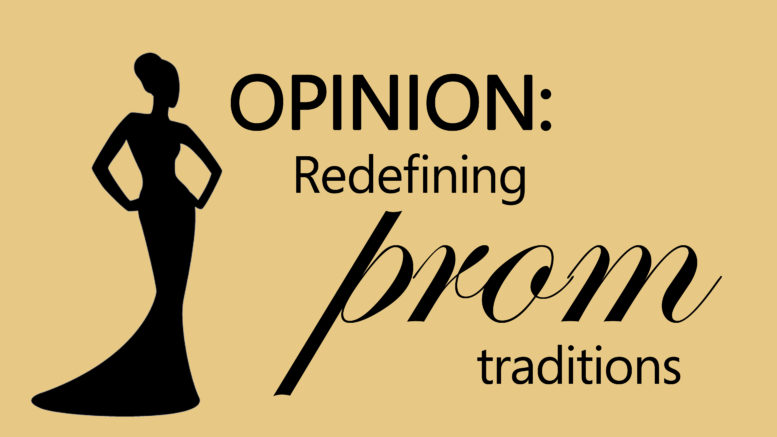By Staff Writers Gloria Chang & Helen Wang
While prom may be just a high school dance, it is also a way to celebrate self-expression. Breaking prom traditions is essential in embracing our differences, and we should treat prom as a way to make the night perfect for ourselves, not as a way to adhere to tradition.
Prom is the perfect time for students to relax with friends and celebrate the end of junior or senior year. While many people look forward to the luxurious night, filled with photoshoots, food, and dancing, others may also fear being the odd one out at prom, faced with stigmas such as boys having to buy tickets and girls having to wear long dresses. On a night when everything must be perfect, it is counterintuitive that students have to conform to tradition. Acts such as promposals, buying tickets, and dress code should all be tailored to fit a student’s preferences, not what others think is the traditional, ideal prom experience.
According to Statista, US high school students in the Western region spend, on average, $342 on promposals alone, and it shows, as more and more elaborate prom asks appear all over social media. Boys are often pressured by peers’ asks to do so themselves, leading to an expensive trend. In addition, both girls and boys are not willing to go to prom stag, or without a date.
This fear of rejection becomes a roadblock to stepping out of comfort zones and exploring new options. Whether that be a girl asking a guy, or someone asking a person of the same gender, the prospect of public ridicule discourages students from being different.
Although prom dress styles have evolved, the persistent mindsets of students remain unchanged. After finding their date, more extensive planning revolves around the “promposal,” the public ask. The rest of the list drags on: tuxedos, dresses, color-matching outfits, pre-prom photos, limousine rides etc. The visible results of the weeks of logistical preparation last for less than half a day, but live on in the photos we post to Facebook and Instagram.
But this is prom as we know it — a formula for fun. Teens chase the image of what they think a good time should look like — having a date, wearing fancy clothing, and posting aesthetic photos, in order to gain more recognition.
This stereotypical prom experience may push people, who do not identify heterosexually, who may not want a date, or who simply do not have the money for extravagance, into unwanted, uncomfortable positions. The dominance of peer pressure discourages students from breaking the mold and enjoying themselves through self-expression.
Boys may flaunt their masculine responsibility by buying tickets and corsages for their date, even when it becomes a financial burden. The origin of these traditions stem from the outdated ideas of being an affluent “gentleman.” Thus, these situations exemplify the insecurities many students have about having the traditional “perfect prom” experience, even going to the extent of not attending the event if they cannot find a date.
However, it is not entirely our fault that there is such a strong adherence to outdated traditions. Because many students make their decisions based on tradition, prom decisions are often expected or taken for granted. Therefore, it is important for students to realize the potential differences that arise from tradition are often a brave conscious decision.
MSJ similarly has given its prom the ironically fitting name “A Tale as Old as Time.” Our school is no exception when it comes to thoughtlessly following tradition. For example, in past years, the “promposal” contests posted in Facebook groups used free tickets as an incentive for participation. The publicity for prom asks centers around superficial presentation, even creating mild competition. Although there is nothing wrong with custom itself, students must consider why those practices are in place and understand how they exclude nonconformists. There should be no shame in being yourself and enjoying what you prefer. We should instead be actively promoting a system of support and acceptance and follow the goal of such a memorable event.
As students, we have already begun discussing how peer pressure during prom season can steer individuals into uncomfortable decisions, but taking action is the most difficult part. The first step is promoting a supportive environment and putting more thought into our individual decisions. By going stag, planning a cheaper but more personal prom ask, breaking heterosexual norms, or wearing a suit as a female, we can redefine our prom traditions and, in turn, inspire others to do the same.
Students can reach past superficial appearances and material worth and in turn create valuable experiences through shattering preconceptions. By encouraging unique methods of self-expression — not just through words but defining moments of action — we can transform prom into a much more inclusive experience.
Graphics by Opinion Editor Anthony Chen, freepik.com


Be the first to comment on "Redefining Prom Traditions"